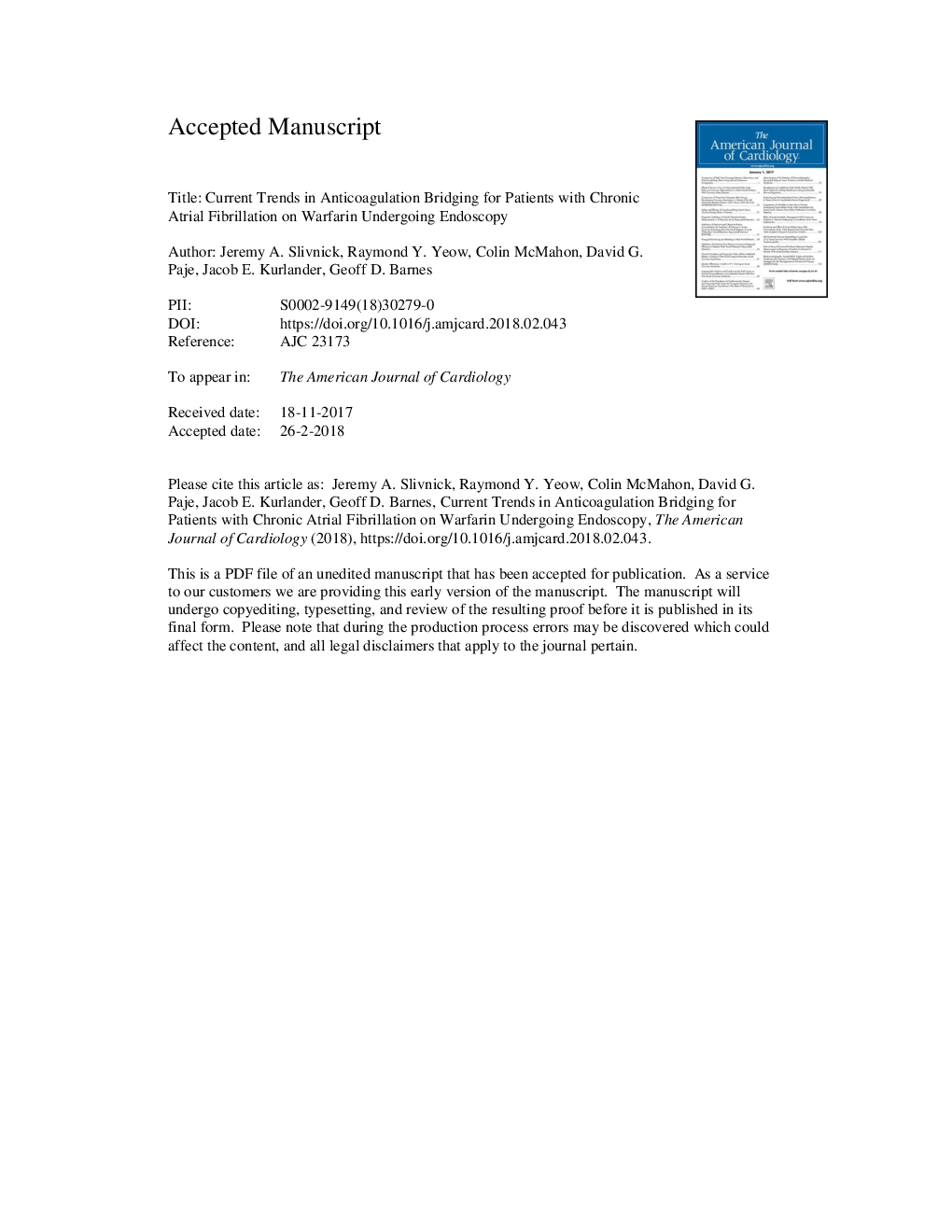| Article ID | Journal | Published Year | Pages | File Type |
|---|---|---|---|---|
| 8651225 | The American Journal of Cardiology | 2018 | 14 Pages |
Abstract
For warfarin-treated patients with atrial fibrillation (AF) at low thromboembolic risk, recent studies have shown harm associated with periprocedural bridging using low-molecular-weight heparin. Clinician surveys have indicated a preference toward excessive bridging, especially among noncardiologists; however, little is known about actual practice patterns in these patients. We performed a retrospective evaluation of bridging in the setting of gastrointestinal endoscopy. We identified 938 patients with AF on warfarin who underwent esophagogastroduodenoscopy or colonoscopy between 2012 and 2016 at a tertiary health center. Urgent, inpatient, or advanced endoscopic procedures were excluded. Clinical variables were abstracted using a predefined data dictionary. Values were expressed as means and compared using a t test or a chi-squared test as appropriate. Three hundred seventy-four patients met criteria for analysis. Twenty-five percent of these patients received bridging therapy, including 11% of patients with CHADS2 scores of 0 to 2 without valvular AF or previous venous thromboembolism. Of the clinical variables assessed, CHADS2, CHA2DS2-VASc, and a history of stroke were the strongest predictors of bridging. Cardiologists were also significantly less likely to prescribe bridging than noncardiology providers (18% vs 30%, pâ=â0.011); this effect was significant when controlling for CHADS2, CHA2DS2-VASc, or stroke history. In conclusion, patients with AF on warfarin receive excessive low-molecular-weight heparin bridging in the setting of endoscopy; the lower rates of bridging observed among cardiologists suggests a need for their increased involvement in this decision making.
Related Topics
Health Sciences
Medicine and Dentistry
Cardiology and Cardiovascular Medicine
Authors
Jeremy A. MD, Raymond Y. MD, Colin BA, David G. MD, Jacob E. MD, MSc, Geoff D. MD, MSc,
